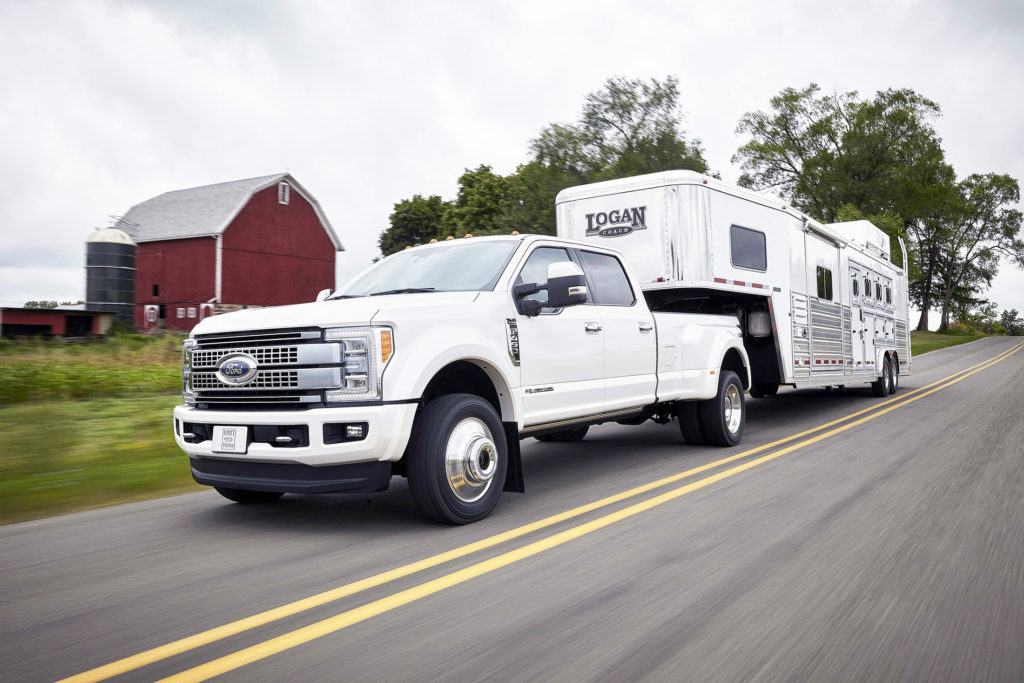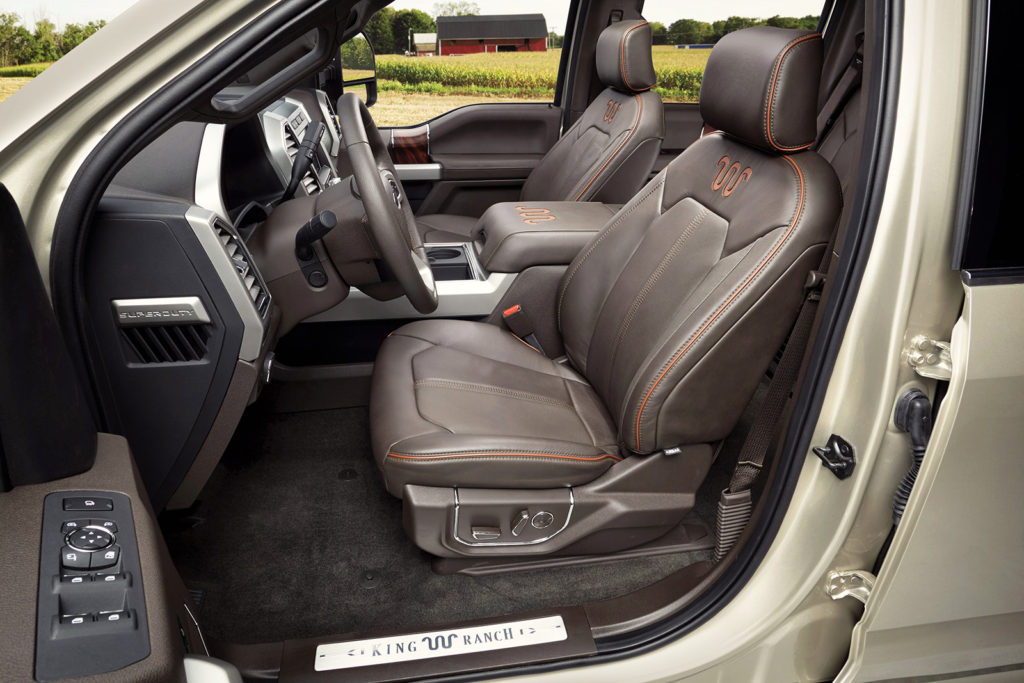Cargazing
By Derek Price
In more than 15 years of writing about the auto industry, this is the most dramatic turnaround I’ve ever seen.
It’s the new 2017 Ford Super Duty, and it’s such a monumental leap over the outgoing generation 2016 truck that they hardly seem like they could have come from the same firm.
Granted, I’ve never seen any company let an important vehicle get as crusty as Ford did with the old Super Duty, either. It’s been 18 years since an all-new, heavy-duty Ford truck came out.
Most truck makers move faster than that. Heck, continental plates move faster than that.
But for the construction workers, plumbers, contractors, oilfield workers and countless small businesses that rely on Ford trucks to do their jobs, the wait was worth it. This new generation truck is phenomenal.
For starters, it wins the all-important numbers war with a diesel engine that makes 440 horsepower and 925 pound-feet of torque, enough for 21,000 pounds of conventional towing or 32,500 pounds with a gooseneck trailer.
Yes, that means you’d need a commercial driver’s license to tow at its full capacity. Personally, I had no trouble towing up and down steep mountain grades northwest of Denver, including pulling a trailer with an F-150 pickup inside it. The Super Duty made it effortless. But with a 30,000-pound load, more similar in weight to what an 18-wheeler might pull, I had to ride along as a passenger while a CDL-carrying driver showed off what it could do.
So yes, it can do its job unbelievably well.

Like the Ford F-150, the new Super Duty makes extensive use of aluminum panels to save weight in the body. It used that weight savings, though, to dramatically beef up its frame for more capability and better performance than before.
Much of the performance increase boils down to the materials used. Like the new F-150, it uses far more aluminum to reduce weight. But unlike the light-duty truck, Ford used much of that weight savings from the body to add additional weight to the frame, making it bigger, stronger and beefier than before — thus dramatically better for pulling heavy trailers or payloads.
What makes it remarkable, though, is how easy the Super Duty makes all that work seem. It’s the first heavy-duty truck available with adaptive cruise control, for example, with the ability to automatically speed up and slow down with traffic, even when pulling a loaded trailer up and down hills.
In fact, this truck is packed with impressive technology, most of which is centered around making towing easier, safer and more intuitive.
For example, Ford’s optional Trailer Reverse Guidance system uses a graphical icon to show you which way to turn the steering wheel if you want to back straight up — something surprisingly tricky that can make an inexperienced truck driver quickly look like a doofus.
Basically, this system is doofus insurance. It even warns you when there’s a risk of jackknifing, a potentially deadly form of doofery.

The Super Duty’s cabin mirrors the refinement of Ford’s latest-generation F-150 now. It offers an impressive array of high-tech features, many of which are centered around towing trailers — the job this truck was born to do.
It’s also available with adaptive steering, a feature famously used by expensive European sports cars that makes it easier to turn at low speeds and less sensitive at highway speeds to keep the vehicle from feeling too twitchy. Comparing the trucks with adaptive steering to those without, the system makes a night-and-day difference to maneuverability, and I’m surprised it’s taken the world so long to bring this sports-car tech to big, honkin’ pickups where it makes so much more sense.
The new Super Duty is available with up to seven cameras, including ones that help you line up a trailer hitch or see remotely behind a trailer when backing up. A bird’s-eye-view mode lets you see 360 degrees around the truck, another feature more helpful on giant trucks than on the luxury cars where they’re more common.
How much does all this cost? Well, the base model starts around $33,000, just $150 more than the previous generation truck. The more luxurious F-250 Platinum costs around $62,000, while an F-450 Platinum with every option box checked will set you back a mind-blowing $87,000, according to Ford’s online configurator.
At a Glance
What was tested?
2017 Ford F-250 Platinum ($62,110). Options: None. Price as tested (including $1,195 destination charge): $63,305
Wheelbase: 159.8 in.
Length: 250 in.
Width: 105.9 in.
Height: 78.3 in.
Engine: 6.7-liter PowerStroke turbo diesel (440 hp, 925 ft. lbs.)
Transmission: Six-speed automatic
Fuel economy: Not rated
RATINGS
Style: 7
Performance: 10
Price: 6
Handling: 7
Ride: 7
Comfort: 8
Quality: 8
Overall: 9
Video Review:
2017 Ford Super Duty
bit.ly/17superduty
Why buy it?
An all-new design — its first in 18 years — makes the 2017 Ford Super Duty lineup dramatically better and more capable. It has class-leading power, towing capacity and technology, along with a surprisingly quiet, smooth ride.
